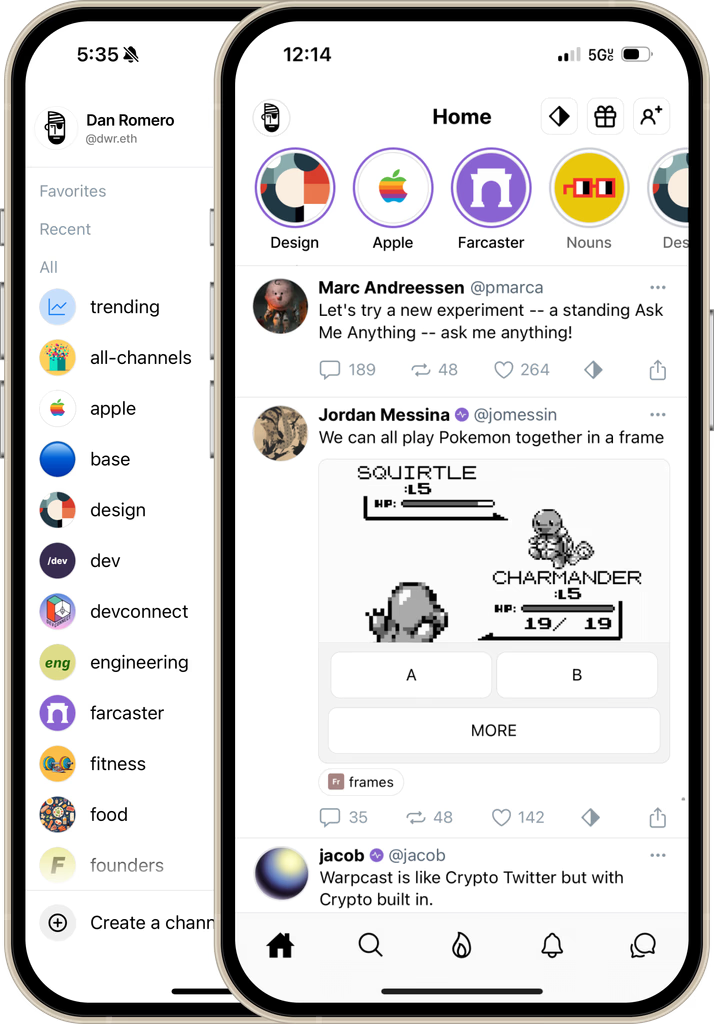As we know it, social media has fundamentally changed how we connect, share, and communicate. However, traditional Web2 platforms like Facebook, Twitter, and Instagram come with significant drawbacks: centralized control, privacy concerns, censorship issues, and the monopolization of user data. Enter Farcaster, a decentralized social media protocol that leverages the principles of Web3 to create a more user-centric, secure, and transparent digital environment.
Web2 Social Media: The Issues
Centralized social media platforms wield significant power over user data, often prioritizing profit over privacy. This model leads to:
- Data Exploitation: User data is harvested and sold to advertisers, compromising privacy.
- Censorship and Control: Content moderation policies can be arbitrary and opaque, leading to censorship.
- Security Vulnerabilities: Centralized databases are prime targets for hacking and data breaches.
Web3 and On-Chain Social Media: The Promise
Web3 aims to decentralize the internet, giving power back to users. On-chain social media platforms like Farcaster offer:
- Decentralization: No single entity controls the network, enhancing transparency and reducing censorship.
- User Autonomy: Users own their data and identities, ensuring privacy and control over personal information.
- Interoperability: Farcaster uses a Layer 2 scaling network and smart contracts for seamless interactions across blockchain networks.
- Economic Models: Content creators can be directly rewarded, fostering a fairer digital economy.
- Enhanced Security: Distributed networks are less vulnerable to centralized points of failure.
Farcaster: The Future of Social Media
Farcaster stands out as a leading example of on-chain social media. Combining the best aspects of Web2 and Web3 aims to create a more equitable and secure digital space. Key benefits include:
- Censorship Resistance: Users can freely share content without fear of arbitrary censorship.
- Privacy and Control: Enhanced privacy measures ensure users control their data and digital footprint.
- Economic Incentives: New economic models allow users to earn rewards, fostering a vibrant, creator-driven ecosystem.
- Interoperability and Flexibility: Farcaster’s protocol supports diverse applications and integrations, enhancing user experience and utility.
The Technical Underpinnings of Farcaster
Farcaster’s technical foundation is built on a Layer 2 scaling network, guaranteeing decentralization, security, and transparency. The protocol uses smart contracts to govern social interactions within the network, introducing a layer of programmability and customization to social networking. Farcaster’s focus on interoperability enables interaction with other blockchain networks, facilitating a fluid exchange of information and assets across different platforms. This interoperability allows developers to build various social media decentralized applications (dApps) on top of the Farcaster protocol.
Farcaster has around 5,000 active users, which is steadily growing as more people recognize the benefits of decentralized social media. This raises intriguing questions about the platform’s future: Will Farcaster launch its cryptocurrency to empower its users and creators further? How will it continue to innovate in the ever-evolving landscape of Web3?
The Future: Embracing Web3 with Farcaster
As Web3 continues to gain traction, platforms like Farcaster are at the forefront of a digital revolution. By addressing the shortcomings of Web2 and leveraging the power of blockchain technology, Farcaster offers a glimpse into the future of social media—one where users have actual ownership, privacy, and control. The potential for innovation and growth in this space is immense, promising a more transparent, secure, and user-centric digital landscape.
Stay tuned to Bitvision AI Press for more updates on the latest trends in Web3 and the evolving landscape of on-chain social media!

